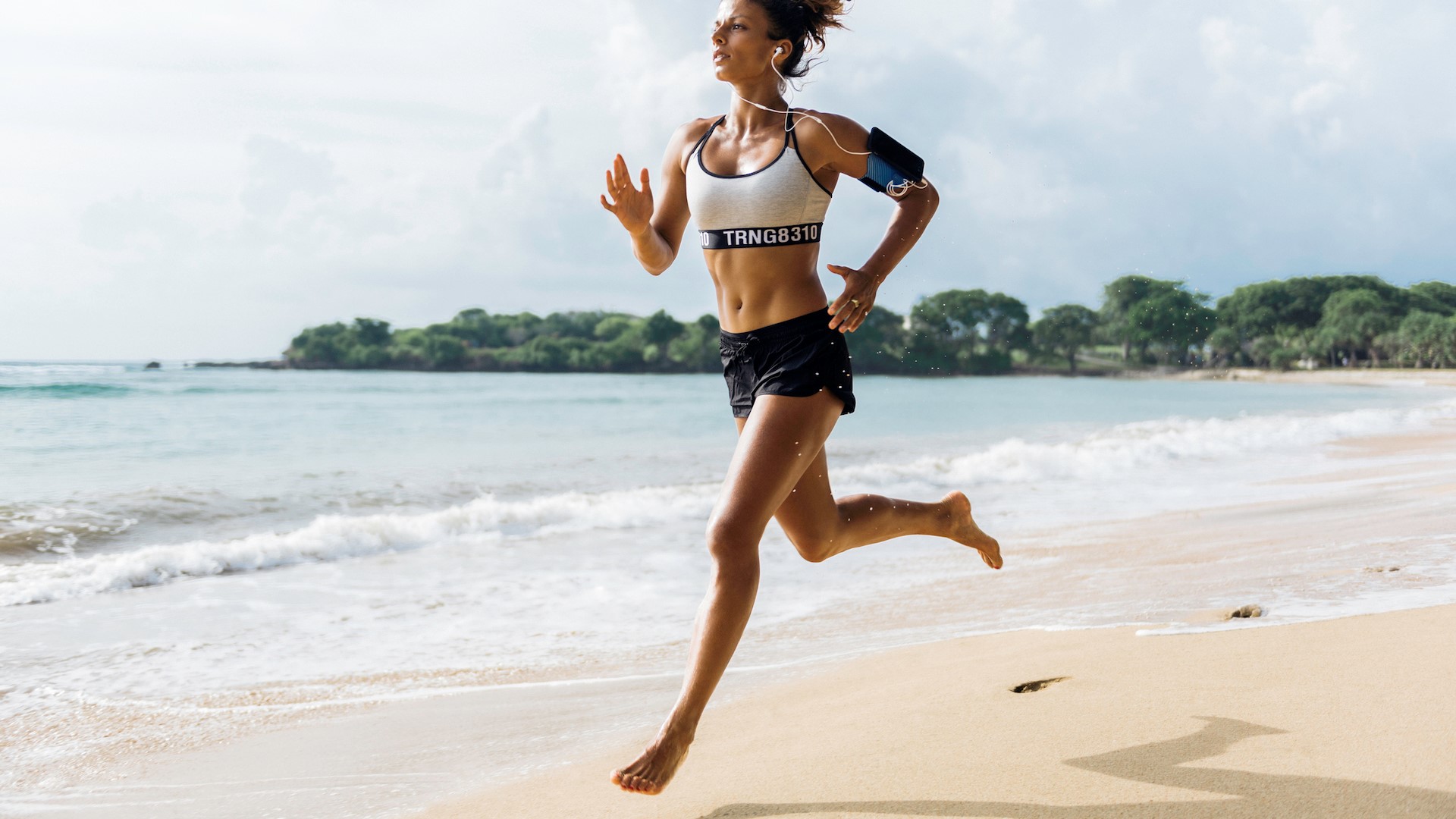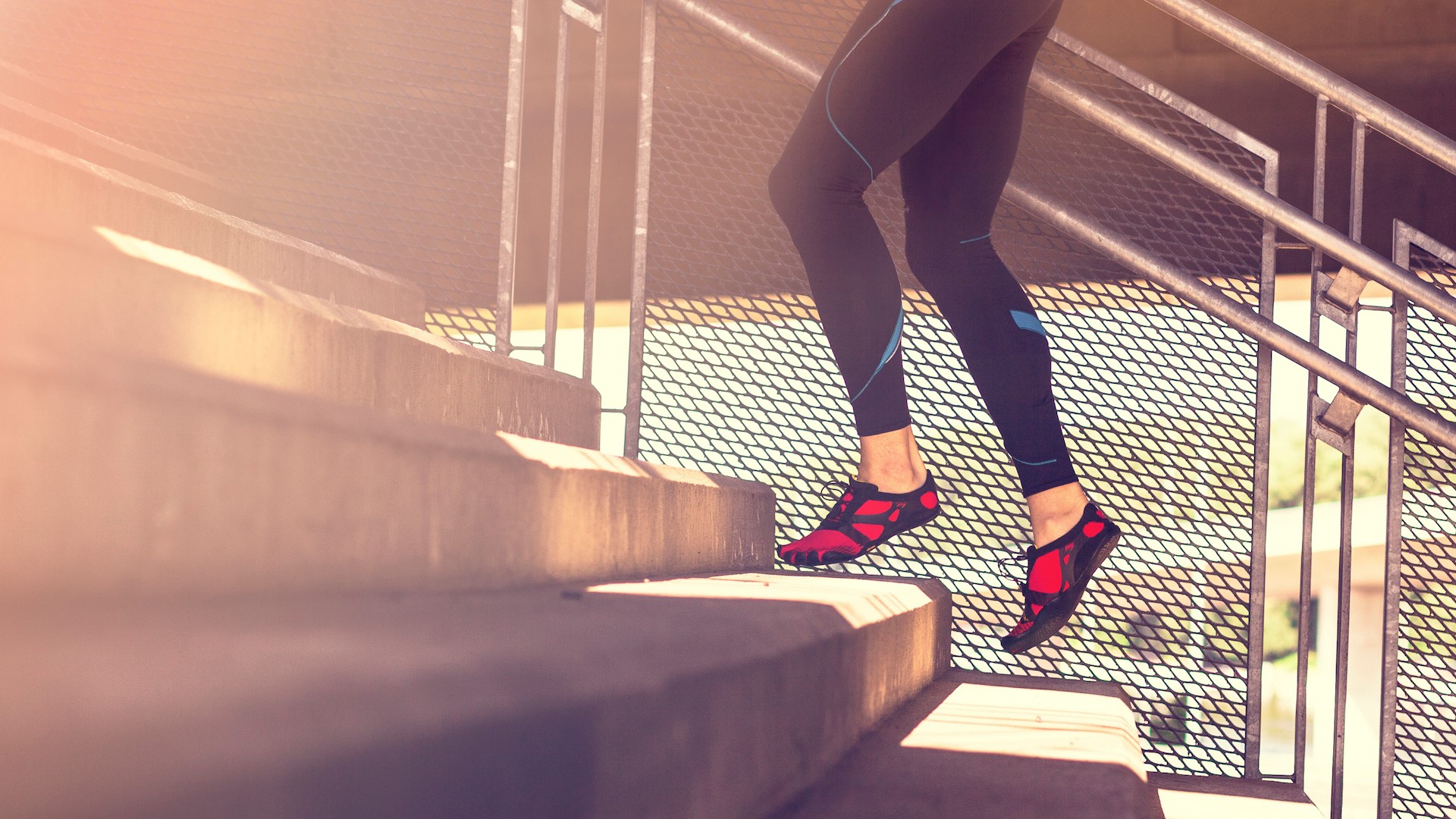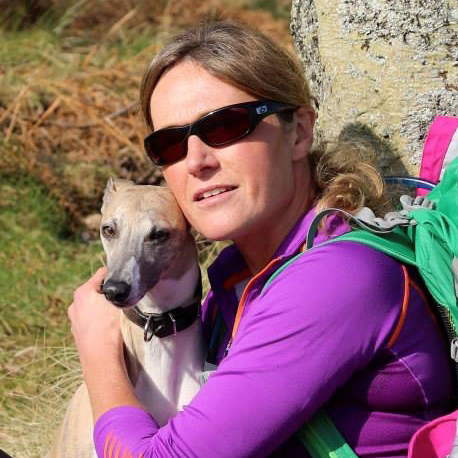Vivobarefoot vs Vibram FiveFingers running shoes
We compare two leading brands of natural and barefoot running footwear

Vivobarefoot and Vibram FiveFingers are known for their barefoot-style running shoes. Both sell footwear that has a minimalist sole, which is said to offer a more natural form of walking and running. They are two of the leading barefoot running footwear brands.

What is barefoot running?
Barefoot running doesn’t actually mean going barefoot, well, unless you want to. Most people refer to barefoot running as running – or walking – in footwear that aims to mimic the biomechanics of being barefoot.
The theory behind barefoot is that it is more “natural” and better for overall body biomenchanics. The style of this running is where your foot strikes the ground forefoot first, rather than heel first. This usually leads to a shorter stride and a faster cadence (or turnover of foot strikes).
In doing so, as you adjust your cadence, so your foot lands under your body rather than out in front. This is considered to be a more “natural” for of running.
Barefoot running is not for everyone and it can take many months of building up to avoid injury. In the end, some people love barefoot running and others really don't!

What are barefoot running shoes?
To achieve a more natural form of running, a barefoot shoe usually has minimal sole stack height and no heel-to-toe drop. Barefoot running shoes also tends to remove the temptation of heel striking by limiting the amount of cushioning under the heel.
In addition, you will find few support features in barefoot running shoes because the foot should behave as if it was without footwear. Therefore, barefoot running shoes generally look flat and have wider toe boxes, so feet can spread out “naturally”.
All the latest inspiration, tips and guides to help you plan your next Advnture!
There are some differences between brands, especially when you consider the Verbal FiveFingers footwear, which has a pocket for each toe.
History notes
Vibram is a company well known for making rubber outsoles for footwear. It is based in Italy and named after its founder, Vitale Bramani, who is credited with inventing the first rubber lug soles.
Vibram soles were first used on mountaineering boots, replacing traditional leather soles fitted with hobnails or steel cleats.
In 2004, Vibram launched the FiveFingers, whihc are described as “a foot glove” and a "second skin for runners”. The shoe was named one of the “Best Inventions of 2007” by Time Magazine.
Meanwhile, Vivobarefoot was founded in 2012 in the UK by two seventh-generation cobblers, Galahad and Asher Clark. The shoe is based on one simple insight: “Barefoot footwear is regenerative to human health.”

Vivobarefoot vs Vibram FiveFingers running shoes
Let’s take a look at the similarities and differences between Vivobarefoot and Vibram FiveFingers running shoes.
The look
First, there is the obvious difference in that Vibram FiveFingers have "toe pockets" for each toe. Fans of these shoes will tell you that the fit and design of the FiveFingers offers a natural feel and they provide a powerful style of running because the toe-off motion is delivered by five toes that are able to flex and splay independently over the terrain.
Meanwhile, Vivobarefoot running shoes look more traditional in that they have a shape that encloses the whole foot, including the toes, in one all-encompassing “pocket”. This brand doesn’t promote the need for the toes to be independently encased, but rather offers a simple, wide forefoot area for the foot to behave more naturally but while being protected from the rough terrain by a minimal sole and upper.
More ‘natural'
Both Vivobarefoot and Vibram FiveFingers describe the so-called benefits of a more natural shoe.
Vivobarefoot states of their footwear: Foot-shaped (not shoe shaped) to let your feet do their natural thing; wide fitting to allow for natural stability; thin sole to enable you to feel more; flexible to enable natural movement; and lightweight and versatile to keep your natural connection.
From the website of Vibram Fivefingers, the company state of their footwear “a protective tool for the foot which allows ground sensory perception, performance and dexterity”. Also that “Vibram’s minimalist running shoes offer lightweight performance footwear with a sole thick enough to absorb impact on hard surfaces".
The sole
Both Vivobarefoot and Vibram FiveFingers design minimal soles for their shoes. There offer a zero drop from heel to foot. This compares to many other running shoes with 6mm to 12mm heel-to-toe.
The depth of the sole rubber varies depending on the terrain the shoes are aimed at. For example, VivoBarefoot Primus Lite III shoes have a 4mm sole depth, while Vibram FiveFingers V-Trail 2.0 shoes have a 3.7mm "Megagrip" rubber outsole.
The soles also have varying amounts of grip to suit running and walking on tarmac versus trails. Both Vivobarefoot and Vibram FiveFingers offer shoes to suit different terrains.
The upper
Both brands design textile uppers for their shoes. It’s suggested the uppers are better for a more natural and flexible feel.
Vivobarefoot state of their Primus Trail II All Weather FG shoes that they are made with a "recycled all-weather mesh textile". (We’ll get to the environmental claims in due course.)
In addition, Vivobarefoot make vegan and animal-free products.
Vibram sell FiveFingers that are claimed to offer great weather and trail resistance, with, for example, “lamination around the toes to prevent seam splitting” and “improved extra resistant polyester fabric upper material that is water repellent”.
Any other features?
Aside from the toe pockets that make the Vibram FiveFingers unique, there are some other extra details to be aware of.
The original Vibram FiveFingers V-Run Retro, for example, have a 2mm foam insole, poly sockliner and a lightweight, minimal EVA arch pad to “add to the shoe’s overall comfort”. So, interestingly, there is a bit more to their shoes than you might expect.
While most shoes are made with textile users, Vivobarefoot also include leather in some of their shoes, such as the Tracker Deacon collection with Woolmark wool and “wildhide” leather. (Wildhide is said to be made from naturally scarred leather from free-roaming cattle sourced from small-scale farmers.)
Some Vivobarefoot shoes also have a so-called “Thermal Insole” with “temperature regulating technology’.
Sustainability: Vivobarefoot vs Vibram FiveFingers
As more consumers demand products that tick a range of eco credentials, so the brands aim to make pledges of being more environmentally friendly. It is important to be wary of greenwashing, and to dig a bit deeper on the claims and promises.
Vivobarefoot, for example, is keen to portray itself as a leader in the eco-friendly footwear marketplace. The company has designed what they call Vivo Bio shoes made from plant-based polymers. These use algae and yellow field corn. They also claim to make shoes with materials that are “between 40 and 50% plant-based”.
Vivobarefoot also sells an Eco range made of “50% recycled plastic, with 17 recycled bottles per pair”. According to Vivobarefoot, in 2017, it diverted more than two million plastic bottles from landfills into barefoot shoes.
But there is more to the claims than meets the eye according to a couple of eco consumer watchdogs. Ethical Consumer states that while Vivobarefoot was among a number of small companies that received “middle or best ratings” for their eco efforts in years past, this has since been downgraded in a more recent report because "the companies have grown but their environmental reporting has not developed beyond thoughtful but unquantified discussions of sustainability issues”.
Good For You website also has this to day about Vivobarefoot. It rates it on environment considerations as: “It’s a start,” and gives these scores: Planet: 2/5, people 3/5, animals 3/5.
Vibram fares worse when assessed by Good For You. The consumer watchdog gives it a "we avoid” rating and these scores: Planet: 2/5, people 1/5, animals 2/5.
Good For You continues of Vribam: “For a brand that has an entire section of its website dedicated to ‘the sustainable way to a careful footprint’, the company isn’t taking enough steps to tackle its environmental impact.”
And: “Vibram does not use eco-friendly materials and there is no evidence it minimises textile waste.”
To find out more about green credentials, you can contact the companies and ask for more details.
Which to choose: Vivobarefoot vs Vibram FiveFingers
The main difference between the two barefoot running shoe brands is the toe area of the shoes. Vibram FiveFingers have toe pockets, while Vivobarefoot have a more "regular" shoe look.
Vibram has a longer history compared to Vivobarefoot, too. There is also a bigger and more varied range of Vibram FiveFinger footwear, compared to Vivobarefoot.
At the end of the day, which you chose will depend on fit, where you run and price. Also, it will be determine by whether you get on with the toe pockets, or not.
- Best trail running shoes: tough footwear for protection and speed

Fiona Russell is a widely published adventure journalist and blogger, better known as Fiona Outdoors. She is based in Scotland and is an all-round outdoors enthusiast with favorite activities including trail running, mountain walking, mountain biking, road cycling, triathlon and skiing (both downhill and backcountry). Aside from her own adventures, Fiona's biggest aim is to inspire others to enjoy getting outside and exploring, especially through her writing. She is also rarely seen without a running skort! Find out more at Fiona Outdoors.
